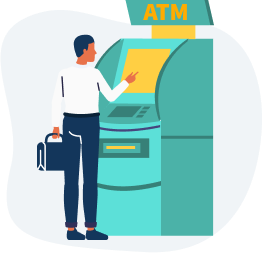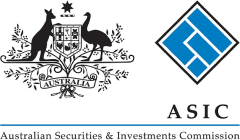Currency in Denmark
A Travel Money Guide to Denmark
Did you know that Denmark has been named the world's happiest country on numerous occasions? According to the UN World Happiness Report, they are currently second on the list.
Whether you're keen to visit the original LEGOLAND® (Fun fact: World-famous LEGO® brick was actually invented by a Dane in 1949!), or if you'd like to bike around the city and indulge in delectable Danish pastries, Denmark is a magical destination for travellers everywhere.
The currency used in Denmark
The currency they use in Denmark is the Danish Krone while the currency code is DKK. In Denmark, each krone is divided into 100 ører. The coins are 50 ører, 1 krone, 2 kroner, 5 kroner, 10 kroner and 20 kroner.
Danish banknotes are available in denominations of 50, 100, 200, 500 and 1000 kroner.
In the major cities of Denmark, the Euro is also accepted in most places, but you will get more for your money and will enjoy smoother transactions if you exchange your currency to the kroner.

Using Your Bank Card in Denmark

Credit and debit cards are accepted at most shops if they are embedded with chip and pin. Most places in cities will have the facilities to cater to card payments but when you’re in smaller villages, it would be best to still have Danish currency on you just in case.
Some of the best travel money cards include debit, credit and prepaid cards. Whether you choose to pay with your card more often is still up to you, as long as you’re aware of the fees and charges incurred by the respective cards.
Debit Cards
In Denmark, you’ll have no trouble using a debit card with a chip and PIN. Remember to check the terms and clauses with your credit card provider, as you may incur exorbitant fees for the currency conversion, foreign transaction, and overseas ATM withdrawals.
To make your trip hassle-free, look for a bank card that’s designed for frequent travellers. Some travel-friendly debit cards that waive a portion of the charges include Wise, ING, Citibank and Revolut.


Credit Cards
In Denmark, credit cards are accepted at most places. Visa is the most widely accepted international credit card network in Denmark, closely followed by Mastercard. The Dankort, the country’s national debit card, is usually issued on both the Dankort and Visa networks.
Before travelling, ensure to read up on the costs of using your credit card overseas, like possible overseas withdrawal fees and cash advance fees at the ATM.
Some credit cards come with attractive features for frequent travellers, including complimentary travel insurance, rewards points, and additional security measures.
But the perks are countered by some exorbitant charges if you use your card overseas, including:
- International transaction fees
- High exchange rate margins
- ATM fees
- Potential ‘cash advance fees’ if you use an ATM
As with debit cards, there are some exceptions. Bankwest Platinum and 28 Degrees cards are designed for travellers and waive the currency conversion fees.
Prepaid Travel Cards
Travel cards are perfect for using and storing foreign currency. In addition to locking in a favourable exchange rate with prepaid travel cards, you also receive a useful back-up card!
Even though they are convenient, you could end up with hidden fees. Some travel cards still impose the following:
- Currency conversion fees
- Uncompetitive exchange rates
- International ATM withdrawal fees
- Reload fees
- Inactivity fees

How to Exchange Currency in Denmark
Even though Denmark has representation in the EU, it uses its own currency – the kroner. While there are shops, hotels, and restaurants that accept payment in both Danish Kroner and Euros, it’s essential to have kroner on you as it is Denmark’s national currency. While it can be better value to buy the currency before you go, you can also get currency once you arrive in the country.

ATMs in Denmark
ATMs can be found in the major cities, and are are usually available 24 hours a day, and the safest ones to use are inside of a bank branch. A good tip would be to make a large withdrawal every few days, instead of every time you have a meal or take a cab as this way, you’ll save on transaction fees.
Denmark Currency Exchange Outlets
There are various ways to change your AUD into DKK in Denmark. Changing your money to Danish Kroner prior to your trip would be ideal but you can also exchange foreign currency at some banks, currency exchange desks at the major airports, and some hotels but look out for service fees.
It would help to check if your local bank has any partnerships or foreign branches. By doing so, you may end up saving on ATM money withdrawals or foreign transaction fees. For example, Citibank, Santander, BNP Paribas, The Royal Bank of Scotland, and UBS all maintain branches in Denmark.


Travellers Cheques
Most restaurants, shops and hotels in Denmark may still accept traveller cheques, but bear in mind that they will give you poor exchange rates, so you’re generally better off avoiding them altogether.
We would recommend sticking with ATM withdrawals and currency exchanges if you’re looking for convenience and better value.
Buying Denmark Currency Before You Go
Buying Danish Kroner before you leave home can be a seamless process, with three main options to suit your needs:
- Buy DKK online and have it delivered or collect it in-store.
- Buy from a bureau de change.
- Buy at your home airport.
Since bureau de change desks at Australian airports are renowned for their poor rates, we recommend avoiding them and picking up your currency ahead of time.
A fuss-free way to secure your travel money is to order it online. It can be delivered to your door or made available for pick-up at a convenient location. Online currency providers offer competitive deals you’re unlikely to find elsewhere. For example, S Money offers the same rate listed on Google and XE.com.
If you’re in the city, an alternative is to visit a CBD bureau de change. Suburban outlets don’t have the competition to keep prices low and banks often supply high fees and poor rates.
What Will Danish Kroner Buy Me?

It’s handy to plan the costs of your trip before you go so you know just how much money to exchange. Prices vary across Denmark but here are some average costs (all prices quoted in Danish Kroner):

540 DKK
A night in a 3-star hotel

75 DKK
Fast food meal

16 DKK
Bottle of local beer

24 DKK
One-way ticket in public transport

60 DKK
Bottle of wine


